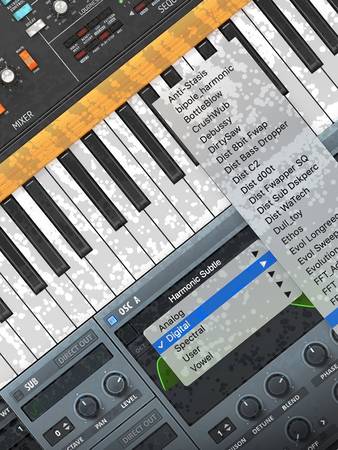
Release year: 2019
Production website: Groove3
Author: Thomas Cochran
Duration: 2 hours, 12 minutes, 1 second
Type of distributed material: Video tutorial
Language: English
Example files: None
Video format: MP4
Video: MPEG4 Video (H264) 1920×1080 30fps 243kbps [V: English [eng] (h264 high L4.0, yuv420p, 1920×1080, 243 kbps)]
Audio: AAC 44100Hz stereo 113kbps [A: SoundHandler [eng] (aac lc, 44100 Hz, stereo, 113 kbps)]
- 409.1 MB
Description: Synth expert Thomas Cochran presents amazing video tutorials on synth sound design! Have you ever heard a killer synth patch and wondered how it was made? Follow along with Thomas as he shows you how to listen to a patch and then recreate it from scratch using any modern synthesizer! These videos are designed for beginner hardware or virtual synthesizer users. Description: Synth guru Thomas Cochran presents awesome synth sound design video tutorials! Have you ever heard a killer synth patch and wondered how it’s made? Follow along with Thomas as he shows you how to listen to a patch and then recreate it from scratch using any modern synth! These videos are designed for beginner hardware or virtual synth users.
Contents :
1. Selecting Synthesizers (6:01)
2. Listening to Oscillators Pt. 1 (11:31)
3. Listening to Oscillators Pt. 2 (8:10)
4. Noise Layers (9:40)
5. Unison & Detuning (7:14)
6. The Filters (13:14)
7. Volume Envelopes (5:37)
8. Filter Envelopes (9:33)
9. LFOs & Modulation (7:23)
10. Applying Effects (11:04)
11. Recreating a Lead Synth Pt. 1 (11:08)
12. Recreating a Lead Synth Pt. 2 (5:32)
13. Recreating a Bass (9:37)
14. Recreating a Pad (16:17)



I never imagined any course like this could even be made. In about 1972 (7th grade) I’d befriended the younger brother of *ARP director of research and development.
We often wondered if any Moog and any ARP could create identical timbres. It must be possible because a sine wave is a sine wave and any oscillator (VCO) can be swept through a spectrum of fundamental frequencies…… but the filters (VCF) are most responsible for the timbre. 🙂 I’d heard or read that Oberheim’s filters are audibly distinct from those that preceded them.
There are tones out there I’d love to learn to recreate, such as the solo patches of Jan Hammer (Mahavishnu Orchestra), George Duke (Frank Zappa’s band), Alan Zavod and Jamie Glaser (Jean-Luc Ponty’s bands). As always Admin thanks.